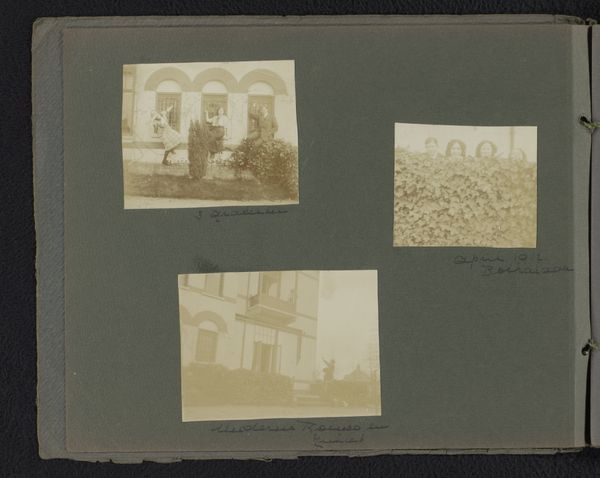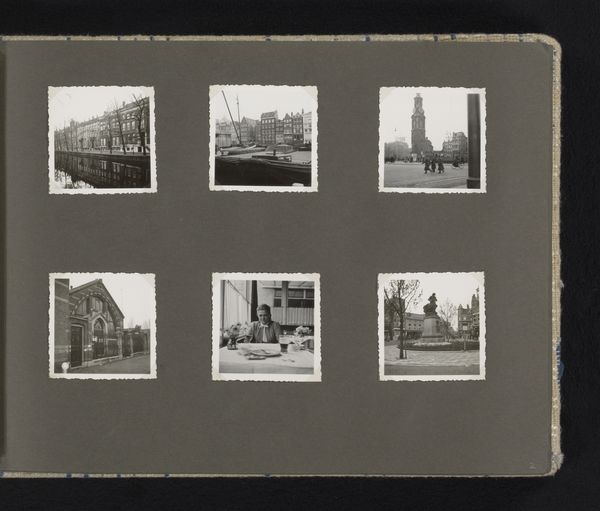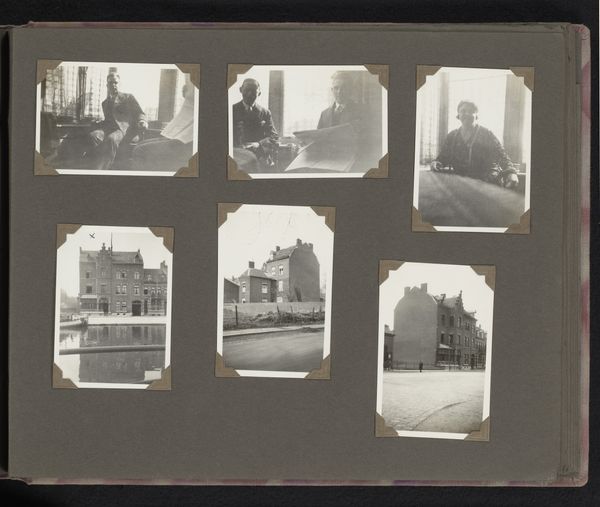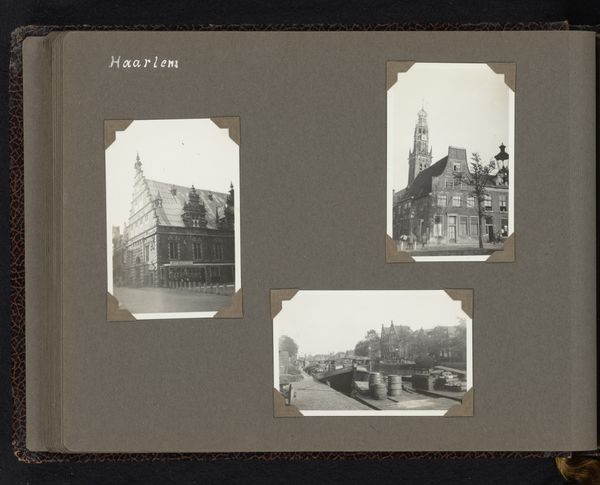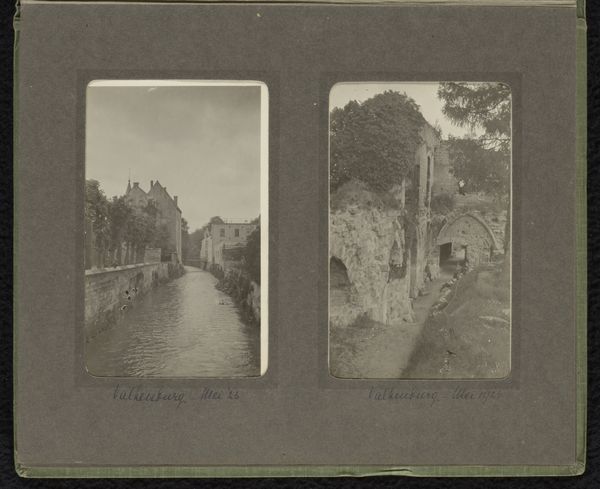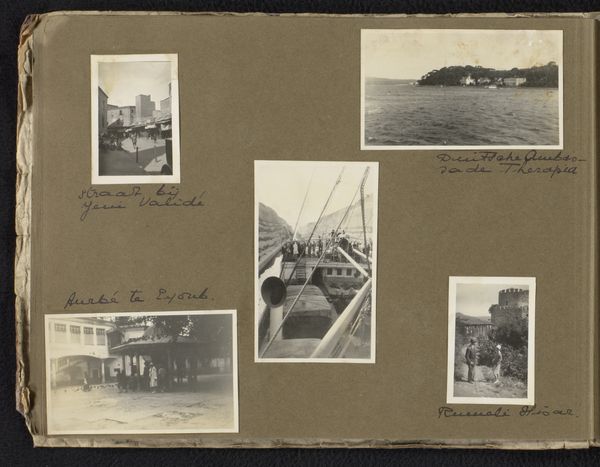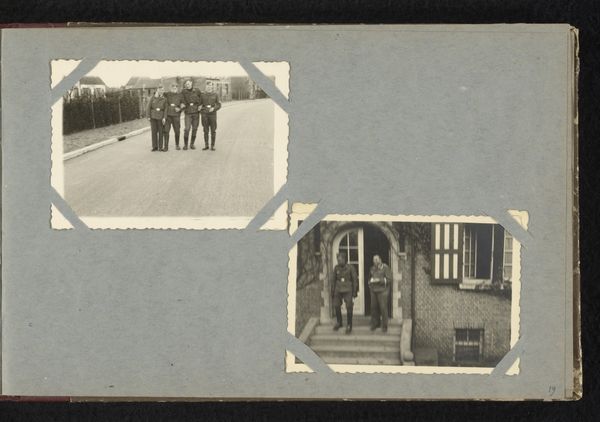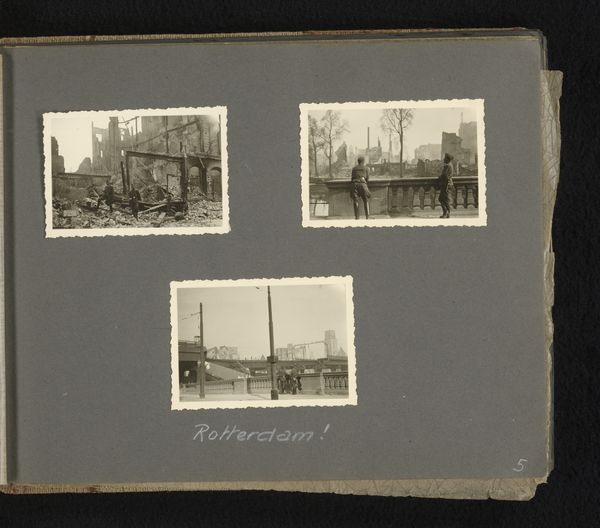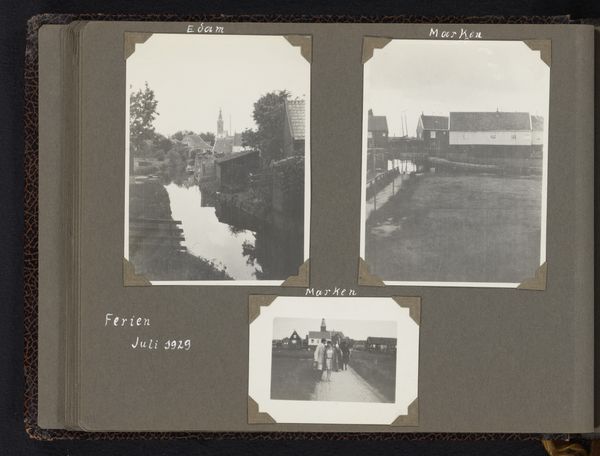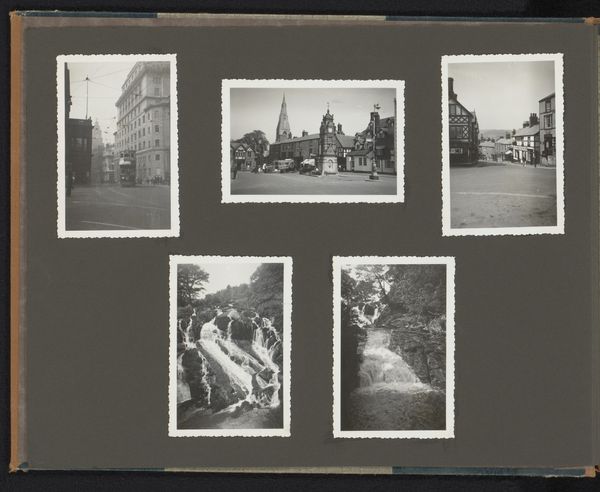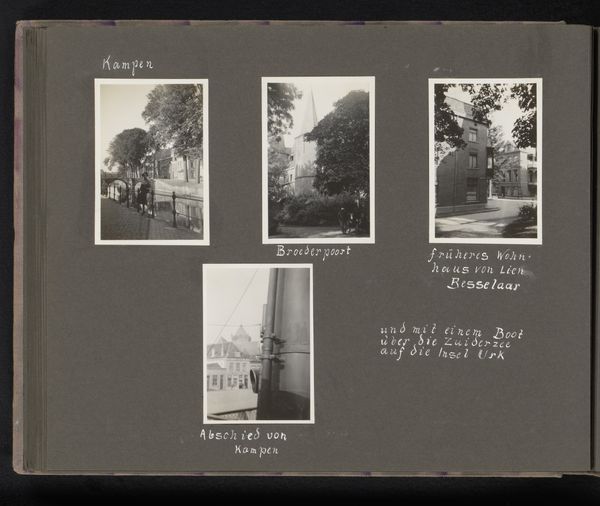
photography
#
landscape
#
street-photography
#
photography
#
watercolor
Dimensions: height 190 mm, width 265 mm
Copyright: Rijks Museum: Open Domain
Curator: What a wonderfully unassuming photograph! This is "Bezoek aan Gulpen," or "Visit to Gulpen," dating from around 1930-1931 by Berti Hoppe. Editor: It gives me a strangely melancholic feeling. It looks like it’s pasted into a family album, three snapshots of the same visit to the old town. I find that album framework quite striking actually. It focuses attention. Curator: Absolutely. I find myself wondering about the materiality of such mementos. The texture of the album's pages, the way the photographs are adhered… it all speaks to a specific era of crafting memory, if you will. Editor: Indeed. Look at the almost eerie stillness of these street scenes. This image, this series, offers a glimpse into the social fabric of the period—a moment in time deliberately preserved within the intimate setting of the family album. What was the role of the artist as craftsperson in that historical setting? Curator: In Hoppe's time, photography was gaining traction as a new mode of documentation and reportage but I would push further and say its newness gives us insight into new industries emerging. I mean, consider how these prints, these everyday snapshots, contrast with the art photography movements flourishing at the time. We are clearly meant to notice this artist. Editor: A deliberate recording. But I'm struck by how different this feels to staged photography. It’s about witnessing life as it unfolded within this specific municipality. We should consider that as photography gained cultural capital, it also played a central role in creating images of nations, their peoples, and their ideologies. Curator: That’s such a helpful distinction. One can easily forget the politics behind the photographic gaze, given its omnipresence today. What this makes me ask is if the intention behind creating art during this period helped build a type of society around the craft of taking a photograph? Did Hoppe see a connection? Editor: Well, that's something we can continue to reflect on I think! The artist seems very keen to document something and in that vein, the artist becomes a time capsule of history for us to interpret many years later. Curator: Agreed, and considering all its many contexts makes this humble photograph all the more meaningful.
Comments
No comments
Be the first to comment and join the conversation on the ultimate creative platform.


